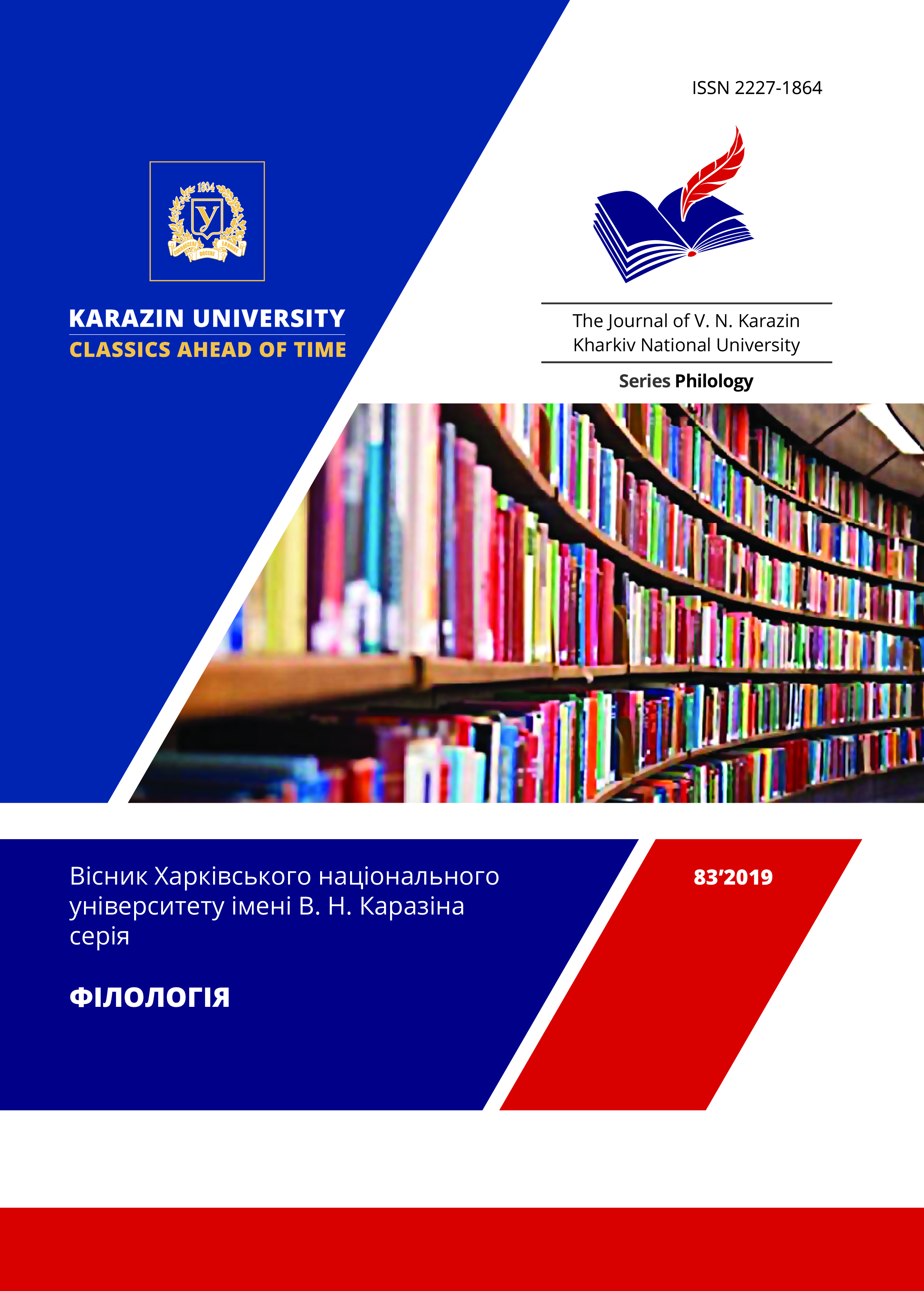The imagological models in the trilogy «Gondwana „Expedition”» by Leonid Tendiuk
Abstract
The article researches the problems of imagology on the material of the trilogy «Gondwana „Expedition”» by L. Tendiuk. The concept of ours – stranger is fundamental to the imagology, questions of the stereotypes of the national thinking as for the images of other nations are raised, and those who have hostile or friendly relationships. And the image of the stranger is revealed with the receptive evaluation apparatus, defines the subject with its self-consciousness and value system. The opposition by the opponents of two warring countries – the Soviet Union and America – realizes in the model of your ours and absolute stranger. The awareness of the heterogeneity of the hero Vasyl Haiovyi and his companions testifies about subjective sympathy as the basis of the imagological representations. Their ideas about good Americans show in the model our people ↔ strangers who could potentially be our. Introducing of the main character with Vietnamese Chang transforms the latter into a state of our and certified with trust and understanding with him and other experimental Vietnamese. This model of relationships is built on the scheme I (our) ↔ absolute stranger → our. This scheme also shows the acquaintance with Lota, who is recognized as our although working on the enemy. The meeting of the researchers with the natives of Atoll represents the clash of different cultures, but it transforms into a hierarchical opposition model of ours – stranger during the conversation between them, because the natives recognize the superiority of the stranger as divine beings. The presence of sailors among the natives can be described as a model of I (ours) → stranger. The ship as a minimodel of native land becomes the center of orderly space that opposes to the chaos of the stranger.
Downloads
References
Voitovych, V. (2005) Ukrainska mifolohiia [Ukrainian mythology]. Kyiv : Lybid. [in Ukranian]
Kotova, S. (2015) «Obraz chuzhoho» i «obraz voroha»: «imaholohiia» v suchasnykh mizhdystsyplinarnykh humanitarnykh doslidzhenniakh [«The image of a stranger» and «enemy image», «imagology» in the modern interdisciplinary humanities researches]. Visnyk KNU imeni T.Shevchenka. no. 14, pp. 20–24.
Leontovich, O. (2004) Russkie i amerikantsyi: paradoksyi mezhkulturnogo obscheniya [Russians and americans: paradoxes of intercultural communication]. Volgograd : Peremena. [in Russian]
Lotman, Yu. (2010) Semiosfera [Semiosphere]. Sankt-Peterburg : Iskusstvo–SPb. [in Russian]
Mironov, V. (2005) Filosofiya i metamorfozyi kulturyi [Philosophy and metamorphoses of culture]. Moscow : Aletey. [in Russian]
Posokhov, S. (2016) «Svoi, «chuzhi», «inshi»: problemy ta perspektyvy imaholohii» [«Yours», «stranger», «others»: problems and perspectives of the imagology»]. Kharkivskyi istoriohrafichnyi zbirnyk. vol. 15, pp. 28–41.
Tendiuk, L. (1989) Ekspedytsiia «Hondvana» [Gondwana „Expedition”]. Kyiv : Veselka. [in Ukranian]
Leerssen, J. [Imagology: history and method]. URL : http://www.imagologica.eu/ pdf/historymethod.pdf




